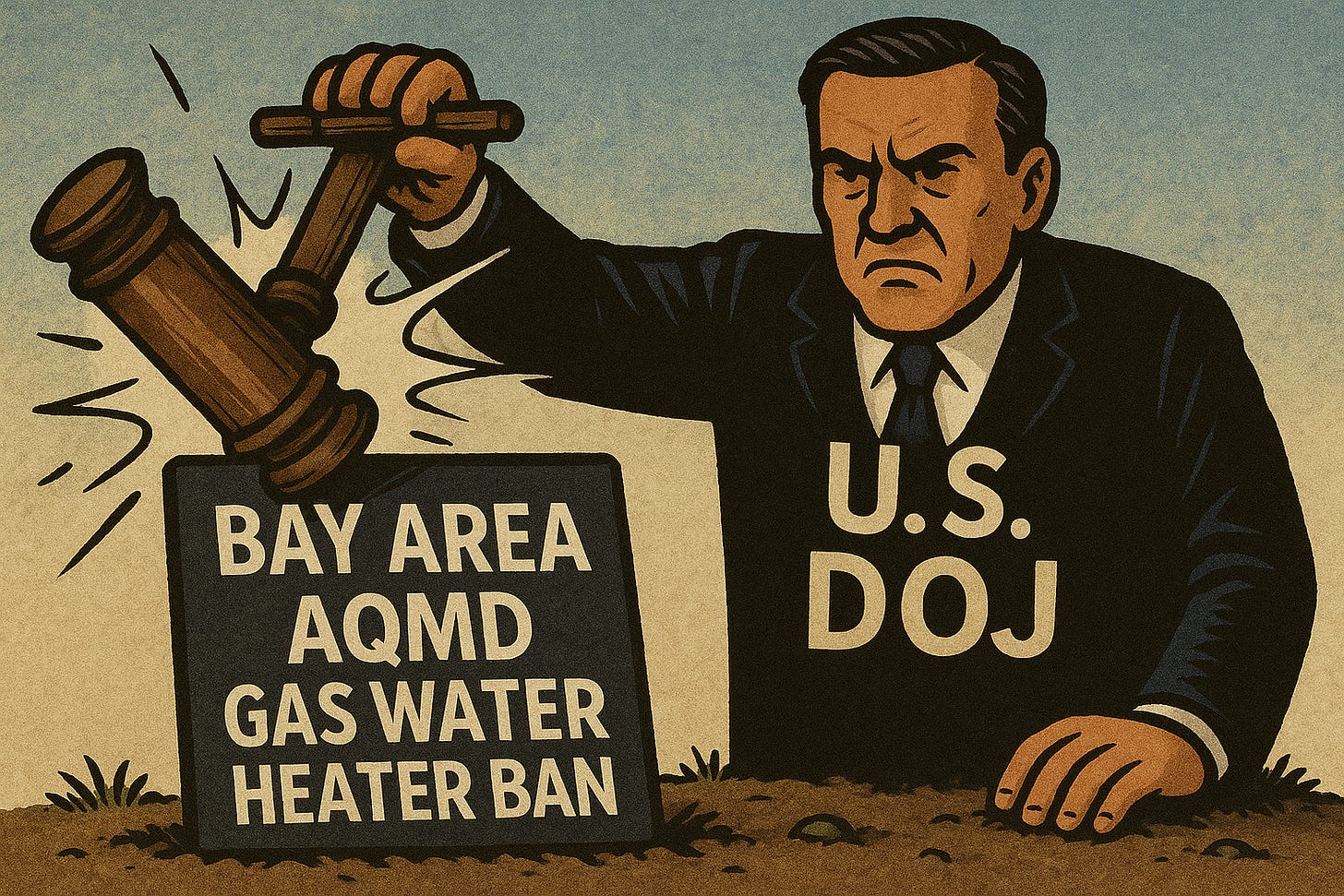Bay Area Air Quality Management District’s Ban on Gas Water Heaters and Furnaces Ripe For Repeal
The U.S. Department of Justice warned the South Coast AQMD about their proposed policy, and they backed down. Is the Bay Area next?
A Close Call in Southern California
A few weeks ago, families across Southern California faced a tough choice: pay thousands of dollars to replace their water heaters and furnaces, or face hefty penalties from their local air quality district. The obscure but powerful South Coast Air Quality Management District had been pushing a plan that would have forced homeowners to switch to electric appliances, whether they could afford it or not.
Then, something unexpected happened. Two days before the crucial vote, a letter from the U.S. Department of Justice arrived. The message was straightforward: this policy violates federal law. The district quickly backed down, but the close call left many wondering how we got so close to such a costly mandate in the first place.
The Bay Area Might Be Next
The Bay Area Air Quality Management District doesn’t seem to have gotten the memo up north. In 2023, they passed a rule requiring ultra-clean furnaces by 2027— a draconian policy that could put families in the same bind Southern California just avoided. With the federal government clearly stating its position on these local rules, Bay Area AQMD Board members might want to consider what happens next.
The Real Cost of Extra Clean Air
Nobody argues against cleaner air—we all want our kids to breathe easier. But the numbers tell a sobering story. While the South Coast district talked about small annual fees, the reality for homeowners would have been much different. New heat pumps can cost up to $8,000 per household, and that’s before installation. For a family already stretching to make mortgage payments, that’s not pocket change. Fortunately the proposed was defeated, after hearing from the US DOJ and the poeple.
The Bay Area’s approach is very similar—and families will likely face expensive upgrades whether they’re ready. What’s particularly concerning is that lower-income families, who can least afford these changes, often get hit hardest by these well-meaning policies.
When Local Rules Go Too Far - The Absence of Prudence
What’s really frustrating is that both districts heard from thousands of residents during their planning processes. People shared real concerns about costs, timing, and whether their local power grid could handle everyone switching to electric appliances simultaneously. Yet the rules moved forward anyway. The eco-extremists simply do not suffer any pushback or care about prudence.
The South Coast AQMD even created fact sheets to address what they called “myths” about their proposal, but many of those “myths” turned out to be legitimate worries about real costs and practical challenges.
A Chance to Get It Right
The good news? There’s still time for the Bay Area to learn from Southern California’s experience. Rather than waiting for federal intervention or costly legal battles, they could take a step back and find an approach that doesn’t jeopardize families financially.
The best environmental policies are ones that bring everyone along, not ones that force impossible choices between clean air and keeping a roof over your head. With two and a half years until the Bay Area rule takes effect, there’s still time to find a better way forward—one that works for both the environment and the families who will have to live with the consequences.
So, Does It Matter?
California progressives treat this single-state-in-a-single-nation jihad against man-made carbon emissions with a religious-like fervor. And there is no concept that the huge, mounting costs to Californians, juxtaposed against the nearly insignificant impact on planetwide carbon emissions, make no sense and are punitive on Golden State residents. At some point people will wake up to the fact that these ideological policy makers are not looking out for their interests. Hopefully before it is too late.



